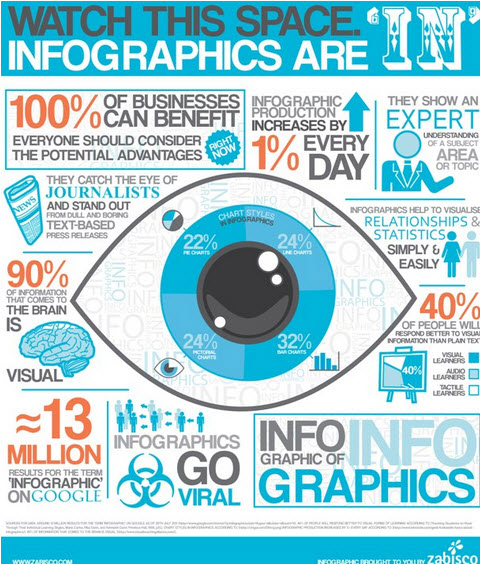Brands
Can Infographics Support Your Brand’s Content Strategy?
Infographics have been heavily growing in popularity over the past two years, and when done correctly, they can help enhance a brand’s content strategy.
 According to blogger Jeff Bullas, infographic search volumes on Google have increased by more than 800% from 2010 to 2012. Likewise, there are upwards of 13 million Google results for “infographic” — that’s a lot of data visualizations floating around the web.
According to blogger Jeff Bullas, infographic search volumes on Google have increased by more than 800% from 2010 to 2012. Likewise, there are upwards of 13 million Google results for “infographic” — that’s a lot of data visualizations floating around the web.
As Bullas illustrated in his own infographic, 40% of people respond better to visual information as opposed to plain text. Furthermore, 90% of the information that enters the brain is visual.
To highlight the importance of infographics, Bullas outlined nine reasons why companies should be using them. Unlike traditional text, infographics are easily viewable, they increase brand awareness if your logo is embedded, they show that you have extensive knowledge about a topic, and they are compelling enough to increase traffic and go viral.

According to Content Strategist blogger Lexi Lewtan, information overload, which can be avoided with an infographic, is “a digital marketer’s biggest fear, and a consumer’s worst nightmare.”
But before you jump on the bandwagon, be mindful that any old infographic just won’t cut it.
Don’t Be Too Promotional
ReadWriteWeb’s Joe Brockmeier said a huge mistake that companies make is that they are obvious when promoting their brands with infographics. “Too often infographics are simply marketing materials in sheep’s clothing,” he wrote. “Now, most infographics are marketing materials -– but the best ones work their magic by conveying information that the audience cares about. It’s not an immediate sale, but the audience is left with a better impression of the company than they had before.” If your company releases an infographic, make sure that it’s not a blatant advertisement, but rather subtle marketing full of handy information.
Length Is Crucial
Brockmeier also emphasizes that infographics should not be too short (they have to be worth the viewers’ time) or too long (people have short attention spans on the Internet). He cautions against unattractive designs, using Flash (to be respectful of iPad and iPhone users), and citing sources on the actual infographic. Though, citations at the bottom of an infographic are arguably the best approach, as credit is given where due.
Due to the rapid gain in popularity, the newness of infographics may start to fade away. As for now, though, people just can’t get enough of them. If you decide to go the same route as many content marketers, be aware of the downfalls, and know the biggest upside: You may just have a viral infographic on your hands.
Image courtesy of Flickr, librarianinblack
Get better at your job right now.
Read our monthly newsletter to master content marketing. It’s made for marketers, creators, and everyone in between.




